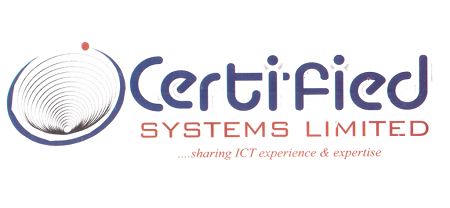What is malware?
Malware is a term that is used for malicious software that is designed to do damage or unwanted actions to a computer system. Examples of malware include the following:
- Viruses
- Worms
- Trojan horses
- Spyware
- Rogue security software
A computer virus is a small software program that spreads from one computer to another and interferes with computer operation. A computer virus might corrupt or delete data on a computer, use an email program to spread the virus to other computers, or even delete everything on the hard disk.
Computer viruses are frequently spread by attachments in email messages or by instant messaging messages. Therefore, you must never open an email attachment unless you know who sent the message or you are expecting the email attachment. Viruses can be disguised as attachments of funny images, greeting cards, or audio and video files. Computer viruses also spread through downloads on the Internet. They can be hidden in pirated software or in other files or programs that you might download.
A worm is computer code that spreads without user interaction. Most worms begin as email attachments that infect a computer when they’re opened. The worm scans the infected computer for files, such as address books or temporary webpages, that contain email addresses. The worm uses the addresses to send infected email messages, and frequently mimics (or spoofs) the “From” addresses in later email messages so that those infected messages seem to be from someone you know. Worms then spread automatically through email messages, networks, or operating system vulnerabilities, frequently overwhelming those systems before the cause is known. Worms aren’t always destructive to computers, but they usually cause computer and network performance and stability problems.
A trojan horse is a malicious software program that hides inside other programs. It enters a computer hidden inside a legitimate program, such as a screen saver. Then it puts code into the operating system that enables a hacker to access the infected computer. Trojan horses do not usually spread by themselves. They are spread by viruses, worms, or downloaded software.
Spyware can install on your computer without your knowledge. These programs can change your computer’s configuration or collect advertising data and personal information. Spyware can track Internet search habits and can also redirect your web browser to a different website than you intend to go to.
What is rogue security software?
A rogue security software program tries to make you think that your computer is infected by a virus and usually prompts you to download or buy a product that removes the virus. The names of these products frequently contain words like Antivirus, Shield, Security, Protection, or Fixer. This makes them sound legitimate. They frequently run right after you download them, or the next time that your computer starts. Rogue security software can prevent applications, such as Internet Explorer, from opening. Rogue security software might also display legitimate and important Windows files as infections. Typical error messages or pop-up messages might contain the following phrases:
Warning!
Your computer is infected!
This computer is infected by spyware and adware.
Note If you receive a message in a popup dialog box that resembles this warning, press ALT + F4 on your keyboard to close the dialog box. Do not click anything inside the dialog box. If a warning, such as the one here, keeps appearing when you try to close the dialog box, it’s a good indication that the message is malicious.
How to remove malware such as a virus, spyware, or rogue security software
Removing a computer virus or spyware can be difficult without the help of malicious software removal tools. Some computer viruses and other unwanted software reinstall themselves after the viruses and spyware are detected and removed. Fortunately, by updating the computer and by using malicious software removal tools, you can help permanently remove unwanted software.
1. Install the latest updates from Microsoft Update
Note A computer virus may prevent you from accessing the Microsoft Update website to install the latest updates. We recommend that you set the Automatic Updates service to run automatically so that a computer is not missing any important updates.
2. Use the free Microsoft Safety Scanner
Microsoft offers a free online tool that scans and helps remove potential threats from your computer. To perform the scan, go to the Microsoft Safety Scanner website.
3. Use the Windows Malicious Software Removal Tool
4. Manually remove the rogue security software
If the rogue security software can’t be detected or removed by using Microsoft Safety Scanner or the Windows Malicious Software Removal Tool, try the following steps:
- Note the name of the rogue security software. For this example, we’ll call it XP Security Agent 2020.
- Restart your computer.
- When you see the computer’s manufacturer’s logo, repeatedly press the F8 key.
- When you are prompted, use the arrow keys to highlight Safe Mode with Networking, and then press Enter.
- Click the Start button and check whether the rogue security software appears on the Start menu. If it’s not listed there, click All Programs and scroll to find the rogue security software’s name.
- Right-click the name of the rogue security software program, and then click Properties.
- Click the Shortcut tab.
- In the Properties dialog box, check the path of the rogue security software program that is listed in Target. For example, C:\Program Files\XP Security Agent 2020.
Note: The folder name is frequently a random number or string of characters.
- Click Open File Location.
- In the Program Files window, click Program Files in the address bar.
- Scroll until you find the rogue security software program folder. For example, XP Security Agent 2020.
- Right-click the folder, and then click Delete.
- Restart your computer.
- Go to the Microsoft Safety Scanner website.
- Click the Download Now button, and then click Run.
- Follow the instructions to scan your computer and help remove the rogue security software.
How to protect your computer against malware
There are actions that you can take to help protect your computer against malware.
Turn on the firewall
Confirm that the Windows firewall is turned on. See Turn Microsoft Defender Firewall on or off for instructions on how to do that on modern versions of Windows.
Keep your computer up to date
Don’t be tricked into downloading malware
- Only download programs from sites that you trust. If you’re not sure whether to trust a program that you want to download, enter the name of the program into your favorite search engine to see whether anyone else has reported that it contains spyware.
- Read all security warnings, license agreements, and privacy statements that are associated with any software that you download.
- Never click “Agree” or “OK” to close a window that you suspect might be spyware. Instead, click the red “x” in the corner of the window or press Alt + F4 on your keyboard to close a window.
- Be wary of popular “free” music and movie file-sharing programs, and make sure that you understand all the software packaged with those programs.
- Use a standard user account instead of an administrator account. An administrator account can access anything on the system, and any malware run with an administrator account can use the administrator permissions to potentially infect or damage any files on the system.

